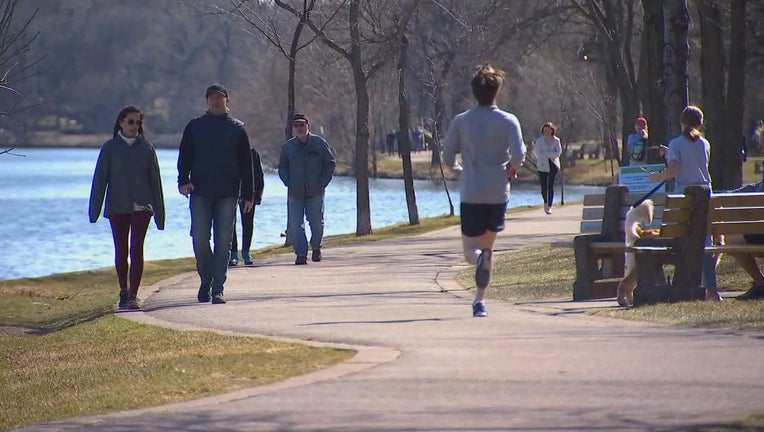Experts explain why Minnesota has the nation's lowest per capita COVID-19 infection rate

People walk around Lake Harriet in Minneapolis amid the stay-at-home order. (FOX 9)
(FOX 9) - Minnesota currently has the lowest per capita infection rate in the nation.
Health experts say Minnesota is being used as a model nationwide of how to social distance well and stay at home. They say Minnesota's success could be due to winter weather that sticks around well into the spring, the state's rural landscape or the many park systems that allow for social distancing.
“I think Minnesotans have adhered,” said Gov. Tim Walz in a press conference Monday. “We have some of the flattest curves or the flattest curve in the country.”
Walz said that although Minnesota seems to be winning the fight against this pandemic, people need to keep up the behaviors that got Minnesota to this point.
Compared to our neighbors in the upper Midwest, Minnesota is even looking better than the Dakotas when it comes to COVID-19 death rates.
“It’s the public health work, it’s maintaining our personal protective equipment to keep our healthcare providers safe and looking for a treatment and a vaccine,” said Dr. Tim Sielaff, the chief medical officer at Allina Health.
Sielaff said Minnesota is overall healthier than others and has a fantastic, collaborative healthcare system already in place
Health experts believe we are still a few weeks away from our peak, but we’ve learned what not to do from the tragic outcomes in New York, New Orleans and even Michigan.
Behavioral specialists say our long winters have also served Minnesota well in training our minds to hunker down in our homes.
“We sort of fortress up with our loved ones, we see our friends and family less frequently and we are just used to trying to be cozy and comfortable at home,” said Dr. Josh Zimmerman, the senior director of behavioral health for HealthPartners.
Another state that is seeing very low infection rates and deaths is California. Medical experts say state leaders there acted early and enacted stay-at-home orders and cancelled schools similar to actions in Minnesota.

